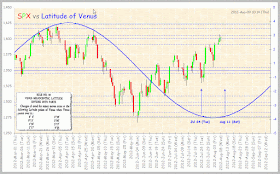The name of the poet or sage was Vâlmiki. Later on, a great many poetical stories were attributed to that ancient poet, and subsequently, it became a very general practice to attribute to his authorship many verses that were not his. Notwithstanding all these interpolations, it comes down to us as a very beautiful arrangement, without equal in the literatures of the world.
There was a young man who could not in any way support his family. He was strong and vigorous and, finally, became a highway robber; he attacked persons in the street and robbed them, and with that money, he supported his father, mother, wife, and children. This went on continually until one day a great saint called Nârada was passing by, and the robber attacked him.
The man accordingly went to his father and asked, "Father, do you know how I support you?" He answered, "No, I do not." "I am a robber; I kill persons and rob them." "What! You do that, my son? Get away! You outcast!" He then went to his mother and asked her, "Mother, do you know how I support you?" "No," she replied. "Through robbery and murder." "How horrible it is!" cried the mother. "But, do you partake in my sin?" said the son. "Why should I? I never committed a robbery," answered the mother. Then, he went to his wife and questioned her, "Do you know how I maintain you all?" "No," she responded. "Why, I am a highwayman," he rejoined, "and for years have been robbing people; that is how I support and maintain you all. And what I now want to know is whether you are ready to share in my sin." "By no means. You are my husband, and it is your duty to support me."
The eyes of the robber were opened. "That is the way of the world—even my nearest relatives, for whom I have been robbing, will not share in my destiny!" He came back to the place where he had bound the sage, unfastened his bonds, fell at his feet, recounted everything, and said, "Save me! What can I do?"
The sage said, "Give up your present course of life. You see that none of your family really loves you, so give up all these delusions. They will share your prosperity, but the moment you have nothing, they will desert you. There is none who will share in your evil, but they will all share in your good. Therefore, worship Him who alone stands by us whether we are doing good or evil. He never leaves us, for love never drags down, knows no barter, no selfishness."
Thus aroused, he exclaimed, "Sage? I am a robber!" "No more 'robber'," answered the voice, "a purified sage art thou. Thine old name is gone. But now, since thy meditation was so deep and great that thou didst not notice even the ant-hills which surrounded thee, henceforth, thy name shall be Valmiki—'he that was born in the ant-hill'." So, he became a sage.
And this is how he became a poet. One day, as this sage, Vâlmiki, was going to bathe in the holy river Ganga, he saw a pair of doves wheeling round and round and kissing each other. The sage looked up and was pleased at the sight, but in a second, an arrow whisked past him and killed the male dove. As the dove fell down on the ground, the female dove went on whirling round and round the dead body of its companion in grief.
In a moment, the poet became miserable, and looking round, he saw the hunter. "Thou art a wretch," he cried, "without the smallest mercy! Thy slaying hand would not even stop for love!" "What is this? What am I saying?" the poet thought to himself. "I have never spoken in this sort of way before." And then a voice came: "Be not afraid. This is poetry that is coming out of your mouth. Write the life of Rama in poetic language for the benefit of the world." And that is how the poem first began. The first verse sprang out of pity from the mouth of Vâlmiki, the first poet. It was after that he wrote the beautiful Râmâyana, "The Life of Rama."





















